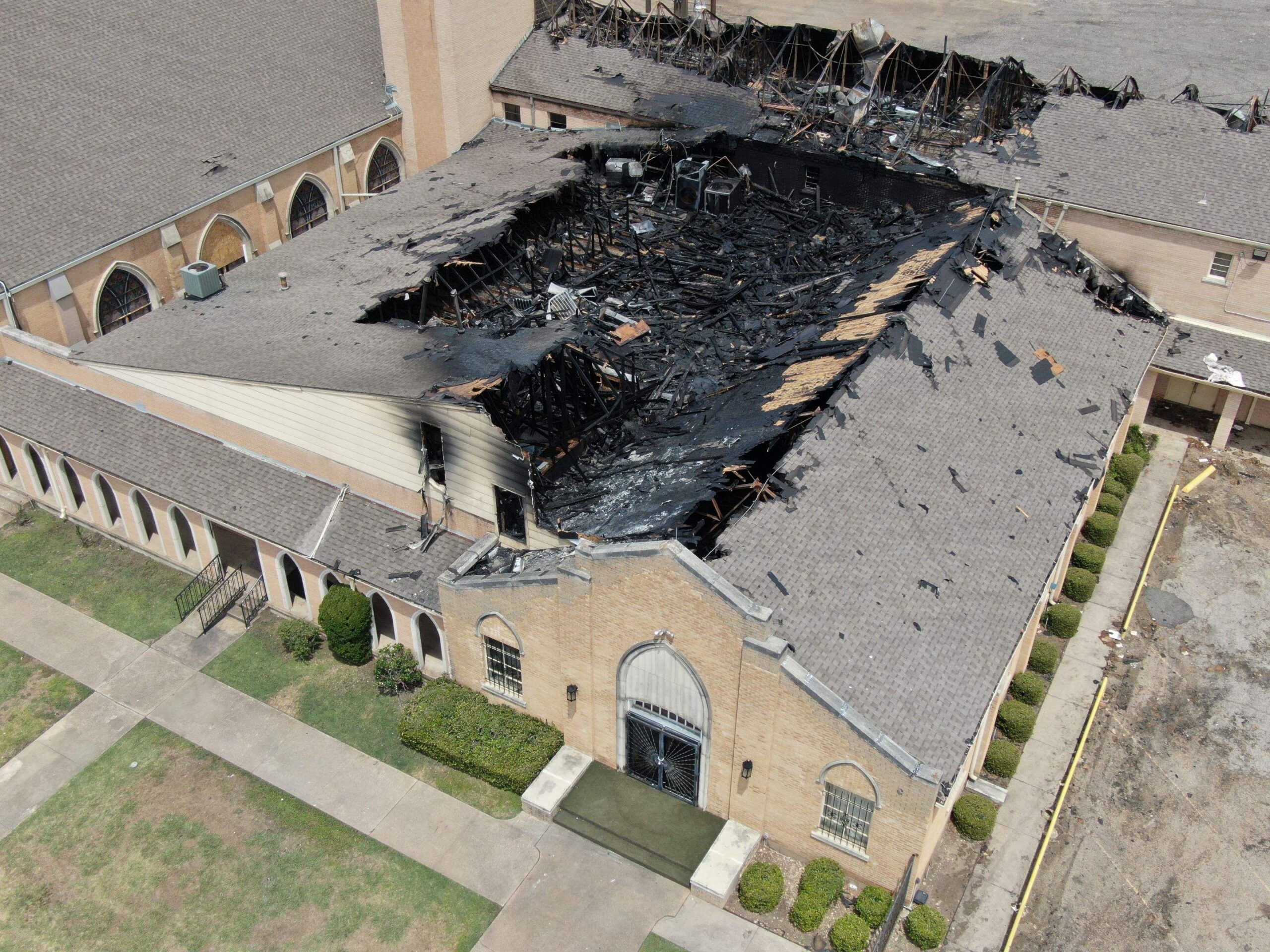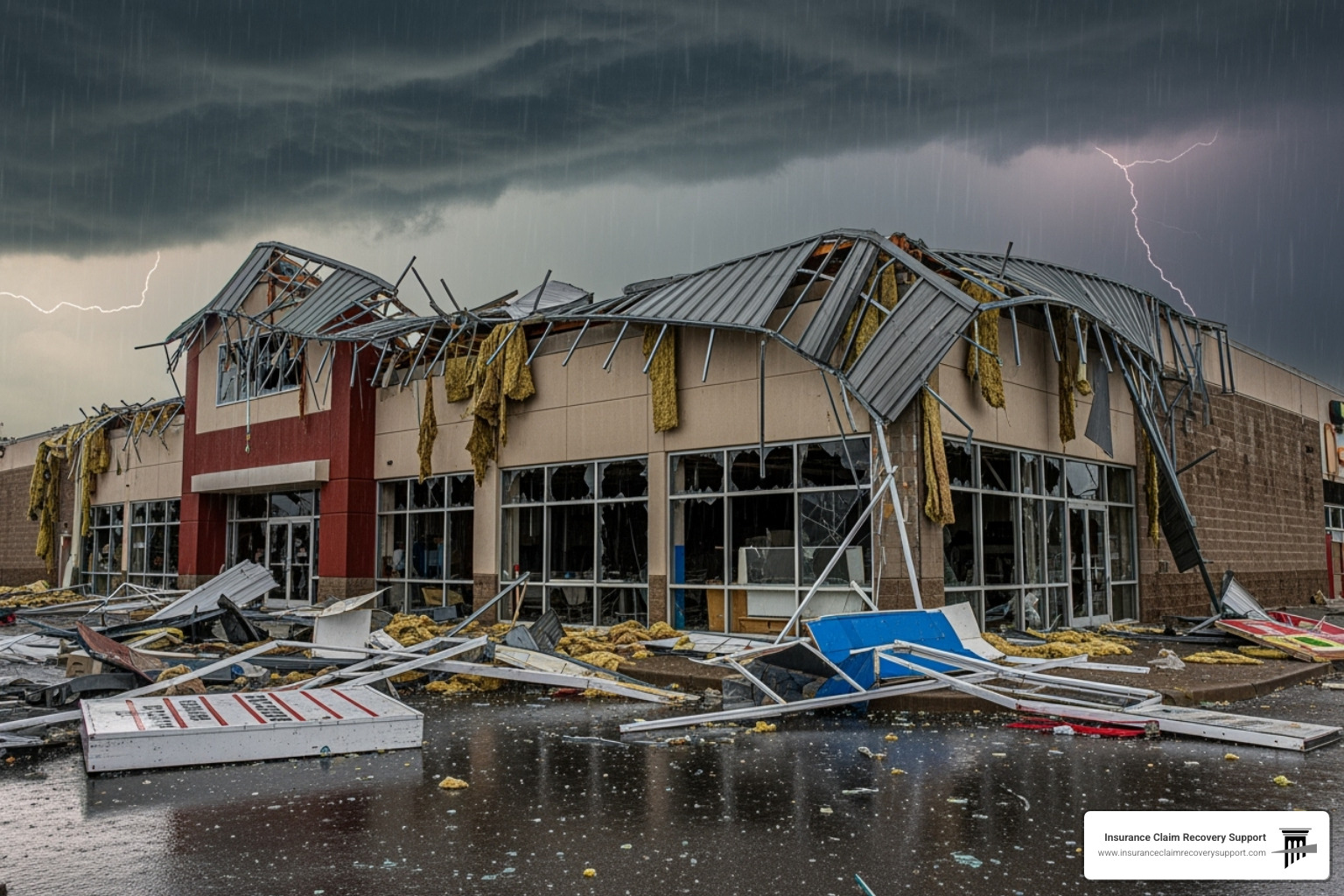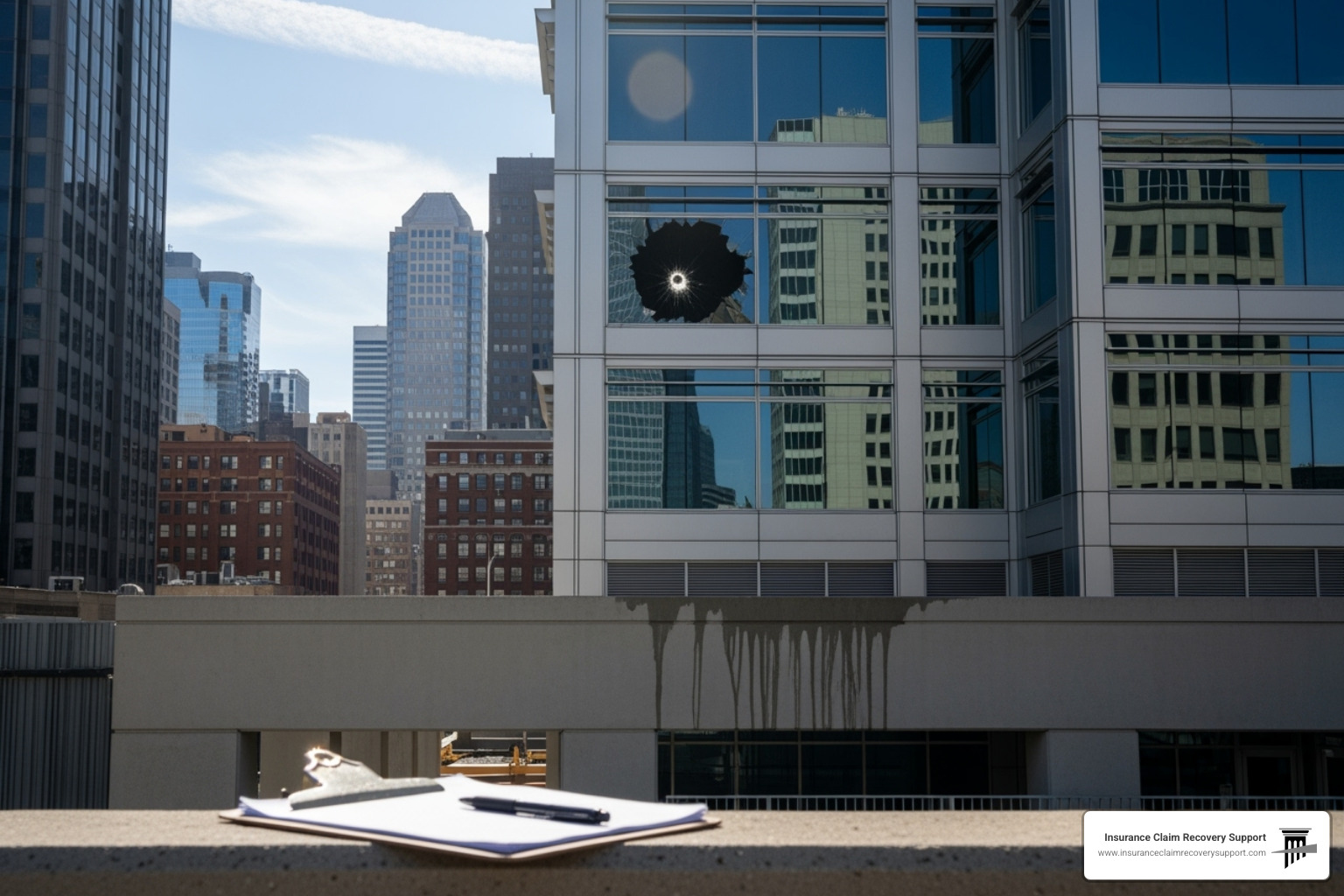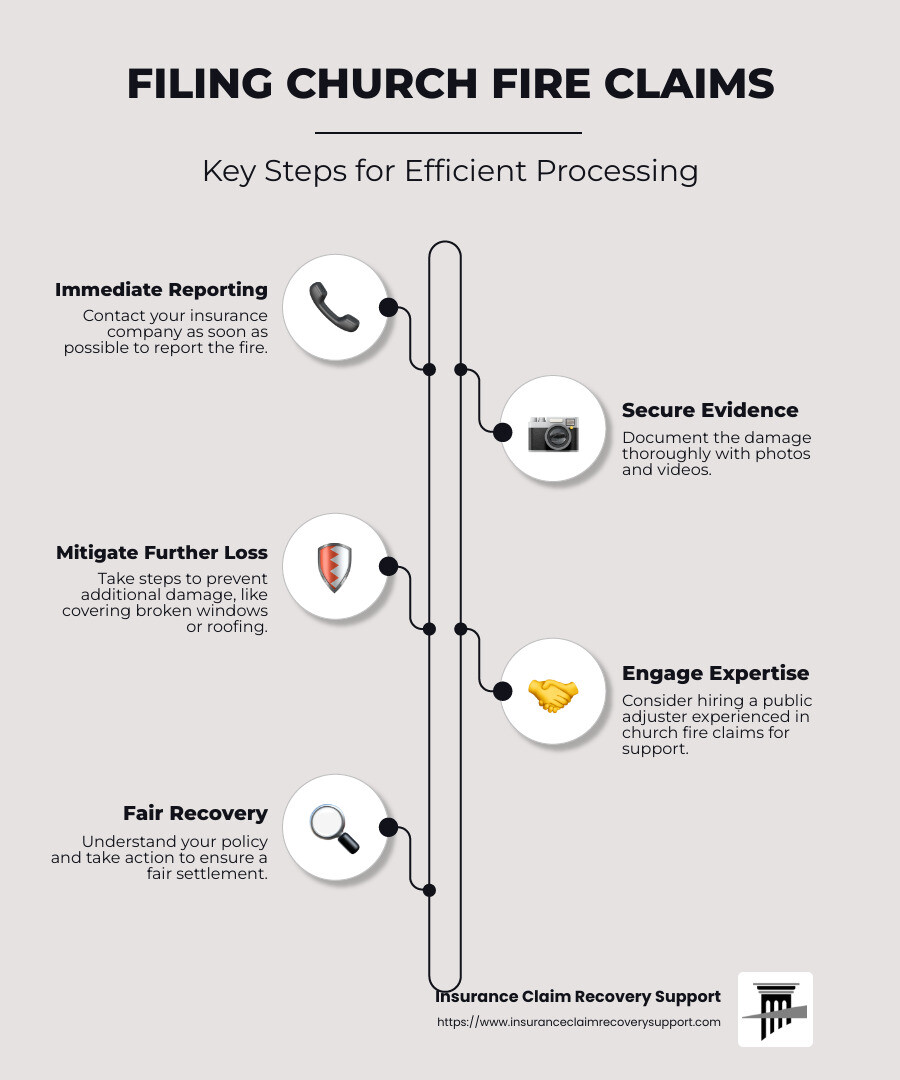
Church fire claims can be a challenging ordeal, especially when faced with the aftermath of a disaster. To effectively steer the insurance process, focus on these essential steps:
- Immediate Reporting: Contact your insurance company as soon as possible to report the fire.
- Secure Evidence: Document the damage thoroughly with photos and videos.
- Mitigate Further Loss: Take steps to prevent additional damage, like covering broken windows or roofing.
- Engage Expertise: Consider hiring a public adjuster experienced in church fire claims for professional support.
Filing church fire claims involves understanding your insurance policy and taking swift action to ensure a fair recovery. Whether it’s safeguarding the community landmark or restoring a place of worship, these steps can help secure the resources needed for rebuilding.
As Scott Friedson, I’ve dedicated years to assisting organizations like churches in navigating complex insurance claims. My experience with church fire claims has involved substantial settlements and the resolution of complicated insurance setbacks. Let’s move forward together to explore how you can effectively manage these claims.
Understanding Church Fire Claims
When a fire impacts a church, the damage can be both visible and hidden. Fire damages can include charred structures, smoke and soot contamination, and water damage from firefighting efforts. Understanding these elements is crucial for a successful insurance claim.
Insurance Policies
Most churches have insurance policies that cover fire damage. These policies typically include costs for repairing or rebuilding structures and replacing damaged contents. However, read your policy closely. Some policies may have exclusions or specific conditions that affect coverage.
Key Coverage Areas:
- Structural Damage: Covers repairs or rebuilding of the church building itself.
- Contents Coverage: Includes items inside the church, like furniture and equipment.
- Additional Living Expenses: May cover costs if the church needs to relocate temporarily.
Repair vs. Replacement
After a fire, deciding between repairing or replacing damaged property is a major consideration. Insurance policies usually specify whether they cover the repair of damaged items or their replacement with new ones.
- Repair: Involves fixing the existing structure or items. This can be less costly but might not restore the item to its pre-fire condition.
- Replacement: Entails buying new items or rebuilding structures to match the original. This option can be more expensive but ensures the church is restored to its previous state.
Tip: Document everything carefully. Photos, receipts, and detailed notes will support your decision, whether you choose repair or replacement.
By understanding these aspects of church fire claims, you can better steer the insurance process and make informed decisions. This knowledge not only aids in recovery but also prepares you for potential challenges in the claims process.
Next, we’ll explore the steps to file a church fire claim effectively.
Steps to File a Church Fire Claim
Filing church fire claims can seem daunting, but breaking it down into clear steps makes it manageable. Here’s how to proceed:
Documentation
Start with thorough documentation. This is the backbone of your claim.
- Photograph Everything: Capture images of all damaged areas and items. Include wide shots and close-ups to show the extent of the damage.
- List Damaged Items: Create a detailed inventory of damaged items, including purchase dates and costs. If you have receipts, gather them as well.
- Secure Important Documents: Collect financial records, appraisals, and any previous insurance assessments. Store digital copies in a secure location, like a cloud service.
Example: A church in Lubbock faced a fire that damaged its historic pews. By having detailed photos and appraisals, they successfully documented their loss and supported their claim.
Contact Your Insurance Agent
Reach out to your insurance agent promptly. They are your first point of contact in the claims process.
- Report the Damage: Inform your agent about the fire and the extent of the damage. Provide them with your initial documentation.
- Understand Your Policy: Discuss your coverage details, deductibles, and any specific conditions that might affect your claim.
- Ask Questions: Clarify any doubts about what is covered and the next steps in the process.
The Claim Process
Once you’ve contacted your agent, it’s time to formally file your claim.
- Submit Your Claim: Provide your insurance company with all necessary documentation. This includes your photos, lists, and any other evidence of loss.
- Meet with the Adjuster: An insurance adjuster will assess the damage. Be present during the inspection to highlight key areas and provide your documentation.
- Follow Up: Keep track of all communications with your insurer. Document dates, times, and summaries of conversations. This helps avoid disputes later on.
Pro Tip: Keep a dedicated folder or digital file with all claim-related documents and communications. This organization can be invaluable throughout the process.
By following these steps, you ensure that your church fire claim is well-documented and efficiently processed. This preparation not only supports your claim but also helps in getting your church back to its original state as soon as possible.
Next, we’ll discuss common challenges you might encounter in church fire claims and how to overcome them.
Common Challenges in Church Fire Claims
Filing church fire claims can be tricky due to unique features and policy limitations. Let’s explore these challenges and how to steer them.
Unique Features of Church Properties
Churches often have unique architectural and historical features that complicate fire claims. Stained glass windows, antique pews, and other historical elements may not be easily replaced.
- Specialized Materials: Churches often contain materials that are rare or custom-made. Replacing these can be costly and time-consuming.
- Historic Value: Many churches are historic landmarks, adding another layer to the claims process. Restoration might require specialized contractors, which can lead to disputes over costs.
Example: A historic church in San Antonio experienced a fire that damaged its century-old bell tower. The restoration required specific expertise, which led to a detailed negotiation with the insurer over repair costs.
Policy Limitations
Church insurance policies can have limitations that might surprise you. Understanding these can help avoid unpleasant surprises.
- Coverage Gaps: Some policies might not cover certain architectural elements or materials unique to churches. It’s crucial to know what your policy does and doesn’t cover.
- Deductibles and Caps: Be aware of high deductibles or caps on certain types of coverage. This can affect the amount you receive.
Tip: Review your policy regularly with your insurance agent to ensure it adequately covers all aspects of your church property.
Insurance Disputes
Disputes with insurers are common in church fire claims. These can arise from disagreements over the value of damaged items or the extent of coverage.
- Valuation Disputes: Insurers might undervalue unique church items or propose repairs when replacements are necessary. This is where detailed documentation can be crucial.
- Repair vs. Replacement: Insurers may push for repairs instead of replacements, especially for high-value items. Be prepared to negotiate and provide evidence supporting your position.
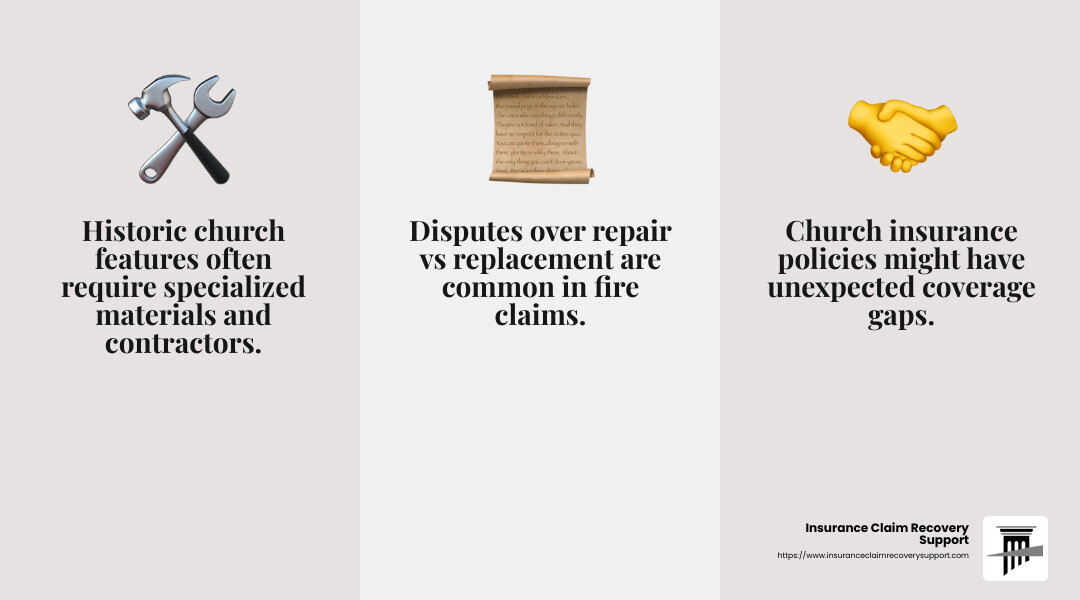
Pro Tip: Consider hiring an independent adjuster or a claims advocate to help level the playing field and ensure a fair settlement.
Navigating these challenges requires preparation and knowledge. By understanding the unique aspects of your church property and the limitations of your insurance policy, you can better handle disputes and work towards a satisfactory resolution.
In the next section, we’ll explore tips for maximizing your church fire claim to ensure you receive the compensation you deserve.
Tips for Maximizing Your Church Fire Claim
Filing church fire claims can be a complex process, but with the right preparation, you can maximize your recovery. Here are some essential tips to help you get the compensation your church deserves.
Keep a Detailed Inventory
An up-to-date inventory is crucial for any insurance claim, especially for churches with unique and valuable items.
- Record Everything: Document every item in the church, from pews to stained glass. Include descriptions, quantities, and estimated values.
- Use Photos and Videos: Visual evidence is powerful. Take clear photos and videos of all items, focusing on condition and unique features.
Example: A church in Austin used a detailed inventory with photos to successfully claim damages for custom-made altar pieces. This thorough documentation helped speed up the claims process and ensured a fair settlement.
Save All Receipts
Receipts are vital for proving expenses and losses related to the fire.
- Keep Receipts for Repairs: Document any immediate repairs needed to prevent further damage. This shows the insurer you took steps to mitigate damage.
- Record Additional Expenses: Keep receipts for temporary accommodations, equipment rentals, or any other costs incurred due to the fire.
Pro Tip: Store digital copies of receipts in a cloud-based system. This ensures they remain accessible even if physical copies are lost.
Implement Safety Measures
Taking proactive safety measures can protect your church from future incidents and may even aid your claim.
- Install Fire Alarms and Sprinklers: These systems can minimize damage and demonstrate your commitment to safety.
- Conduct Regular Safety Drills: Familiarize staff and congregants with evacuation procedures. This can help reduce injuries and liability.
Fact: According to the Austin Fire Department, having a working fire alarm system can reduce the risk of property loss by up to 50%.
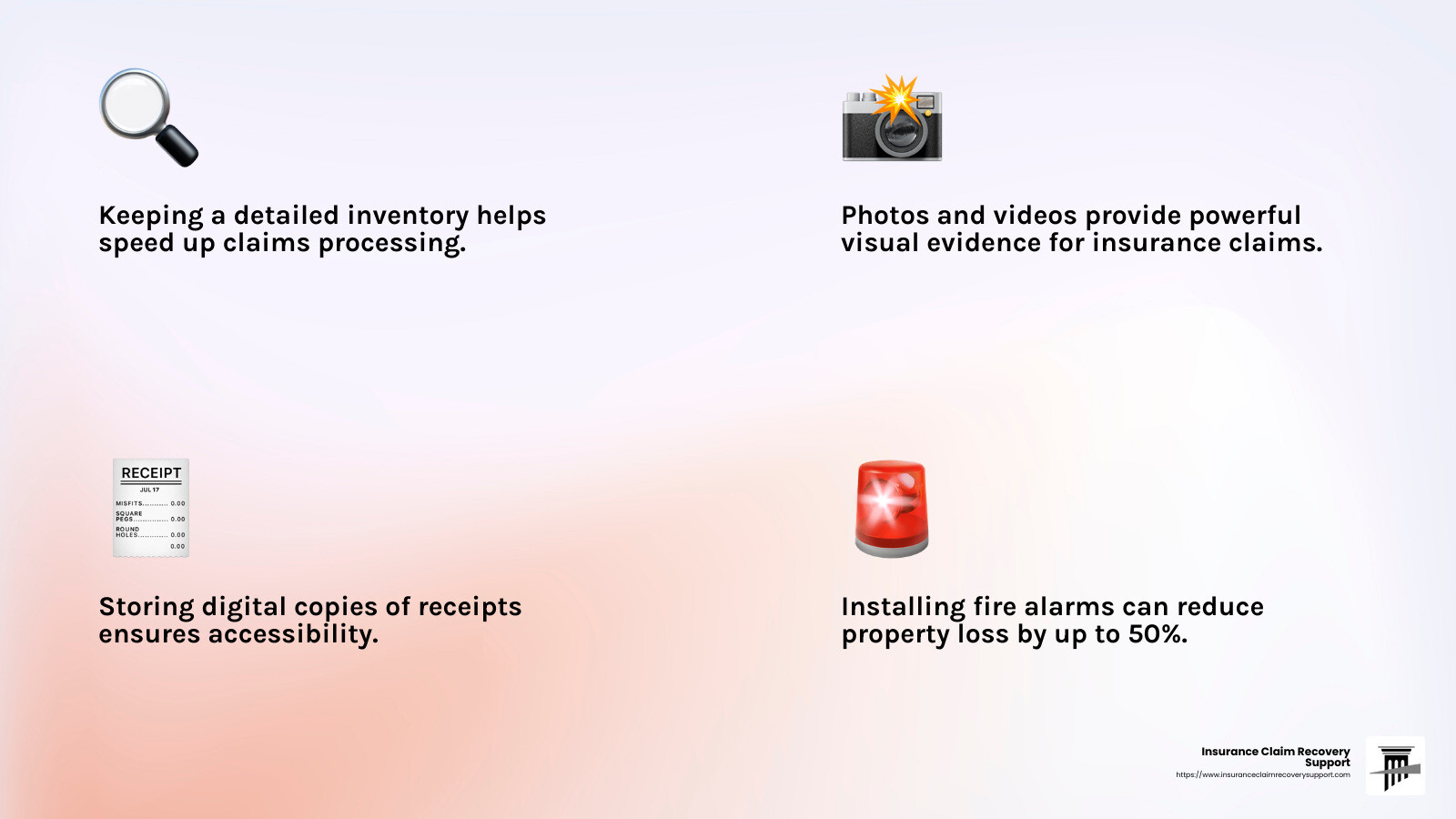
By maintaining a detailed inventory, saving all receipts, and implementing robust safety measures, you can strengthen your church fire claim. These steps not only help in the claims process but also contribute to the overall safety and preservation of your church property.
Next, let’s address some frequently asked questions about church fire claims to clear up any lingering uncertainties.
Frequently Asked Questions about Church Fire Claims
The term “fire church” can sometimes be misunderstood. In the context of church fire claims, it doesn’t refer to a specific belief system. Instead, it relates to the unfortunate event of a fire occurring within a church property. Churches often hold unique and valuable items, making fire prevention and preparedness crucial. Understanding your insurance policy and having a solid disaster plan can help mitigate the impact of such incidents.
What is a church fire?
A church fire is any fire incident that occurs within or impacts church property. This can include the main building, annexes, or any associated structures. Causes can range from electrical faults to accidental fires during events. The aftermath of a church fire often involves significant damage to the building and its contents. Filing a church fire claim involves documenting the damage, understanding your insurance coverage, and working with your insurer to recover losses.
Do churches have fire alarms?
Yes, many churches are equipped with fire alarms and other safety systems to protect their property and congregants. Installing fire alarms is not only a safety measure but can also influence your insurance policy.
- Fire Alarms: These systems alert occupants to evacuate and can significantly reduce potential damage by prompting quicker responses.
- Sprinkler Systems: Some churches also have sprinklers, which can help control fires before emergency services arrive.
Stat: According to the Austin Fire Department, having a working fire alarm system can reduce the risk of property loss by up to 50%.
Implementing these systems is part of a broader risk management strategy that can improve safety and potentially lower insurance premiums.
Conclusion
In the journey of church fire claims, partnering with a dedicated advocate can make a world of difference. At Insurance Claim Recovery Support LLC, we stand by policyholders, ensuring they receive the settlements they deserve. Our focus is on policyholder advocacy, which means we work tirelessly to represent your best interests throughout the claims process.
We understand the unique challenges churches face when dealing with fire damage. From historical architecture to invaluable items, the stakes are high. That’s why our team is committed to meticulous documentation and expert negotiation to maximize your claim.
Operating across Texas, including Austin, Dallas, Fort Worth, San Antonio, Houston, Lubbock, and Waco, we bring our extensive expertise to communities throughout the state as well as other major cities around the U.S. Our local presence allows us to respond swiftly and effectively, ensuring you’re never alone in the aftermath of a fire.
Why choose us?
- Expertise in Fire Claims: We have a deep understanding of fire damage and insurance policies, especially for church properties.
- Commitment to Texas: Our local knowledge ensures we understand the specific challenges and regulations in your area.
- Policyholder First: We prioritize your needs, ensuring your voice is heard and your claim is treated with the attention it deserves.
In the face of a church fire, the road to recovery can seem overwhelming. But with our support, you can steer the complexities of the insurance claim process with confidence. Reach out to us today and let us help you secure the compensation you deserve, allowing you to focus on rebuilding and healing.

